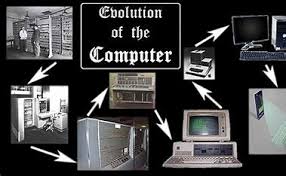
The Evolution of Computer Software
Computer software has come a long way since the early days of computing. From simple programs that performed basic tasks to complex applications that power our modern world, the evolution of computer software has been remarkable.
In the early days of computing, software was often developed for specific machines and had to be manually programmed using low-level languages. As computers became more powerful and accessible, high-level programming languages were introduced, making it easier for developers to write software.
The development of operating systems played a crucial role in the evolution of computer software. Operating systems like MS-DOS, Windows, macOS, and Linux provided a platform for running applications and managing hardware resources efficiently.
With the advent of the internet, web-based applications became popular, allowing users to access software through a web browser. This shift towards cloud computing has revolutionized how software is delivered and used.
Today, artificial intelligence and machine learning are driving the next phase of evolution in computer software. These technologies are being integrated into various applications, making them smarter and more adaptive to user needs.
Looking ahead, the future of computer software is exciting and full of possibilities. As technology continues to advance rapidly, we can expect even more innovative and sophisticated software solutions to emerge, shaping the way we interact with computers and digital devices.
Understanding the Evolution of Computer Software: Key FAQs
- What are the evolution of computer applications?
- What is the 5 evolution of computer?
- What are the types of software evolution?
- What is the history of computer software?
- How has computer software changed over time?
What are the evolution of computer applications?
The evolution of computer applications has been a fascinating journey marked by significant advancements and innovations. From the early days of simple programs designed for specific tasks to the sophisticated and multifaceted applications we use today, computer software has undergone a remarkable transformation. Over time, applications have become more user-friendly, feature-rich, and versatile, catering to a wide range of needs and industries. The advent of cloud computing, mobile technology, artificial intelligence, and other cutting-edge technologies has further propelled the evolution of computer applications, enabling them to be more powerful, efficient, and interconnected than ever before. The future holds even more exciting possibilities for computer applications as technology continues to evolve at a rapid pace.
What is the 5 evolution of computer?
The evolution of computer software can be traced through five key stages that have shaped the modern computing landscape. These stages include the development of early programming languages and systems, the introduction of graphical user interfaces (GUIs) in the 1980s, the rise of internet-based applications and cloud computing in the 2000s, the integration of artificial intelligence and machine learning technologies in recent years, and the ongoing advancements in quantum computing that hold promise for the future of computational power and software capabilities. Each stage has brought significant advancements and innovations that have transformed how we interact with computers and utilize software in various domains.
What are the types of software evolution?
In the realm of computer software evolution, there are several types of changes that occur over time. One common type is corrective evolution, which involves fixing bugs and errors in the software to improve its functionality and reliability. Adaptive evolution focuses on making adjustments to the software to accommodate changes in the environment or user requirements. Perfective evolution involves enhancing the software by adding new features or improving existing ones to meet evolving needs. Lastly, preventive evolution aims to future-proof the software by proactively addressing potential issues before they arise. These various types of software evolution work together to ensure that software remains relevant, efficient, and effective in a constantly changing technological landscape.
What is the history of computer software?
The history of computer software is a fascinating journey that traces back to the early days of computing. In the beginning, software was manually programmed using low-level languages for specific machines. As computers advanced, high-level programming languages emerged, making software development more accessible. The development of operating systems like MS-DOS, Windows, macOS, and Linux played a pivotal role in shaping how software is created and managed. With the rise of the internet, web-based applications became prevalent, leading to the era of cloud computing. Today, artificial intelligence and machine learning are driving further innovation in computer software, promising a future filled with even more advanced and intelligent applications.
How has computer software changed over time?
Computer software has undergone significant changes over time, evolving from simple, machine-specific programs to complex, multi-functional applications that power our digital world today. Initially developed for specific hardware configurations and requiring manual programming in low-level languages, software has become more user-friendly with the introduction of high-level programming languages. The development of operating systems has played a crucial role in streamlining software usage and resource management. With the rise of the internet, web-based applications have become prominent, enabling users to access software remotely through browsers. The integration of artificial intelligence and machine learning technologies is currently driving the next wave of innovation in computer software, making programs smarter and more adaptive to user needs.
